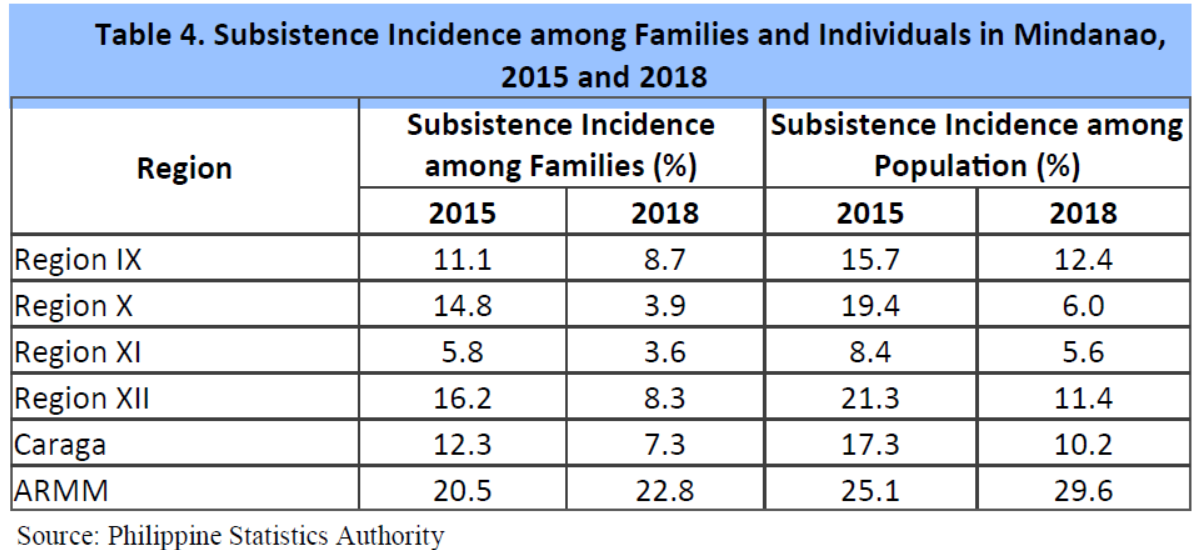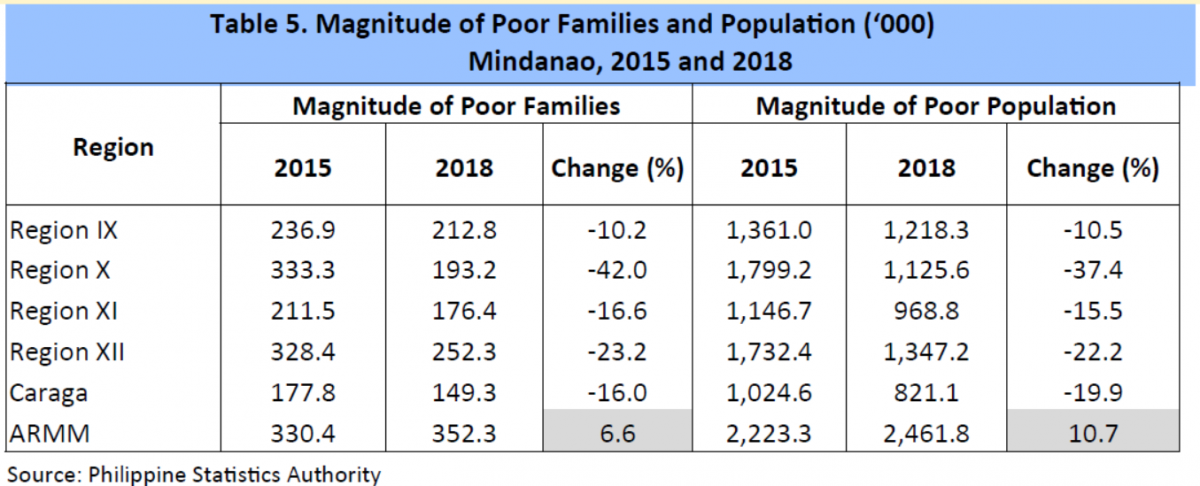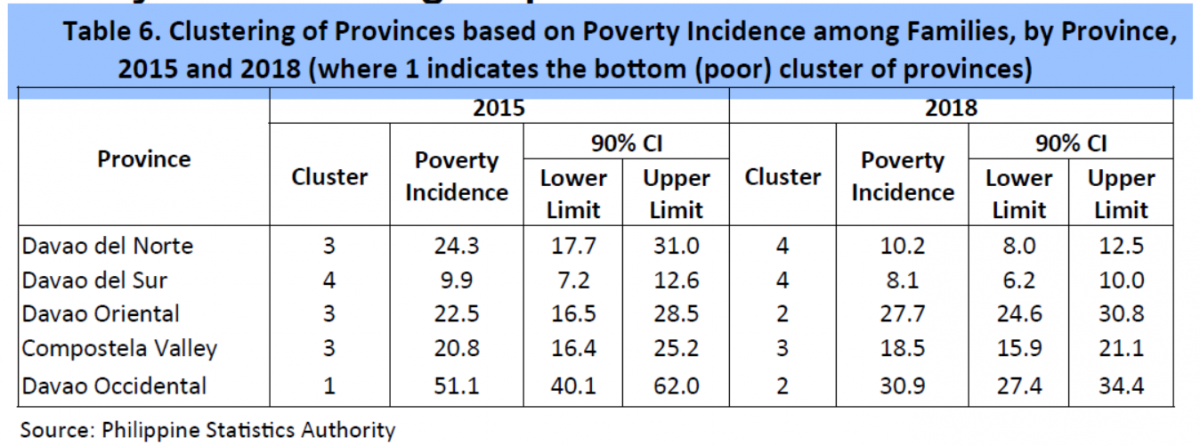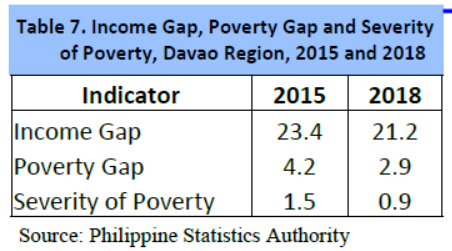 PhP 10,797 needed to stay out of poverty
PhP 10,797 needed to stay out of poverty
Latest estimates released by the Philippine Statistics Authority (PSA) shows that a Davaoeño needed PhP2,159 in 2018 to meet his/her monthly basic requirements to stay out of poverty. Hence, Davaoeño families consisting of five members, the average Filipino family size, must have had a regular source of income amounting to PhP129,559 in 2018 or a monthly income of PhP10,797 to be able to meet their most basic food and non-food needs. Thus, a sole wage earner in a five-member family living in Davao region had to work hard in getting the entire family out of poverty with at most PhP355 income per day.
This translates to an annual per capita poverty threshold of PhP25,912 for 2018 up by 12.1 percent , compared to the 2015 level of PhP23,115. Of this minimum annual per capita income requirement in 2018, PhP18,079 was intended for sustaining basic food needs and the remaining PhP7,833 was intended for other basic needs.
With a per capita food threshold of PhP 18,079 in 2018, a Davaoeno family of five members must have had an annual income of PhP90,396 or PhP248 daily for them not to experience hunger. The 2018 per capita requirement was a 12.0 percent increase compared to the 2015 level of PhP16,139.
The increases in both per capita poverty and per capita food thresholds in the region represent an inflation of about 4.0% on the average per year between 2015 and 2018. The region’s level of per capita poverty and food thresholds were PhP70 percent and 4.4 percent higher than the estimates at the national level, respectively.

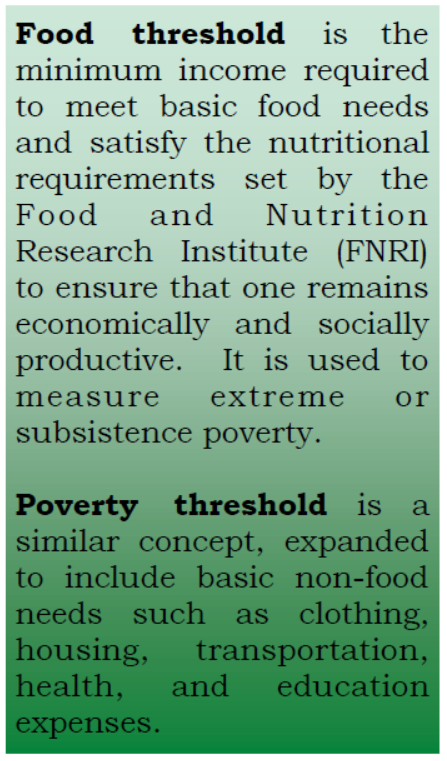
Among the provinces in Region XI, Davao del Norte had the highest per capita income requirement in 2018 with PhP27,031 up by 13.5 percent compared to 2015 estimate of PhP23,807. On the other hand, Davao Occidental had the lowest annual per capita poverty threshold in the same period with PhP25,063 up by 9.9 percent compared to 2015 level of PhP22,809. Similarly, in 2018, Davao del Norte and Davao Occidental had the highest at PhP19,030 and lowest at PhP17,501 per capita food threshold, respectively.
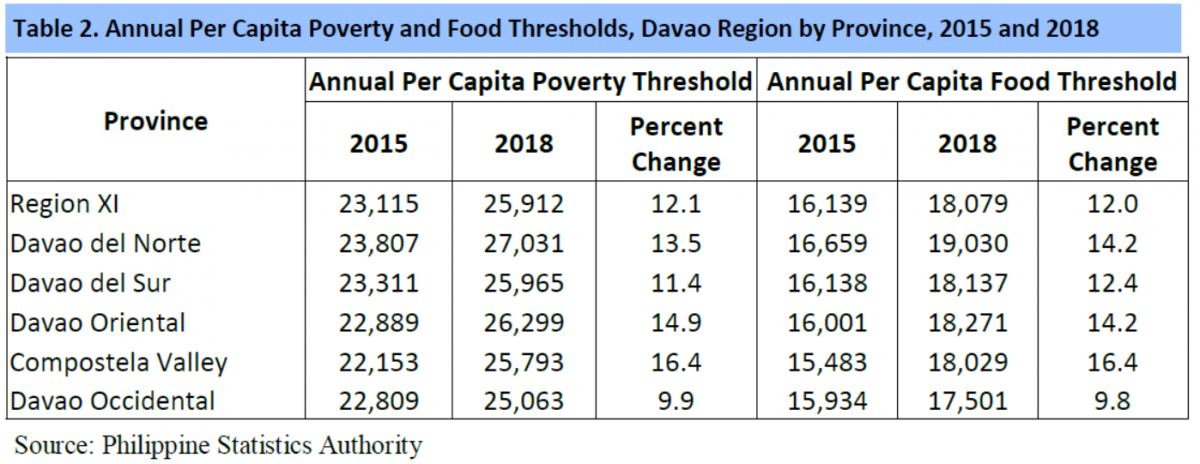
14 out of 100 families are poor
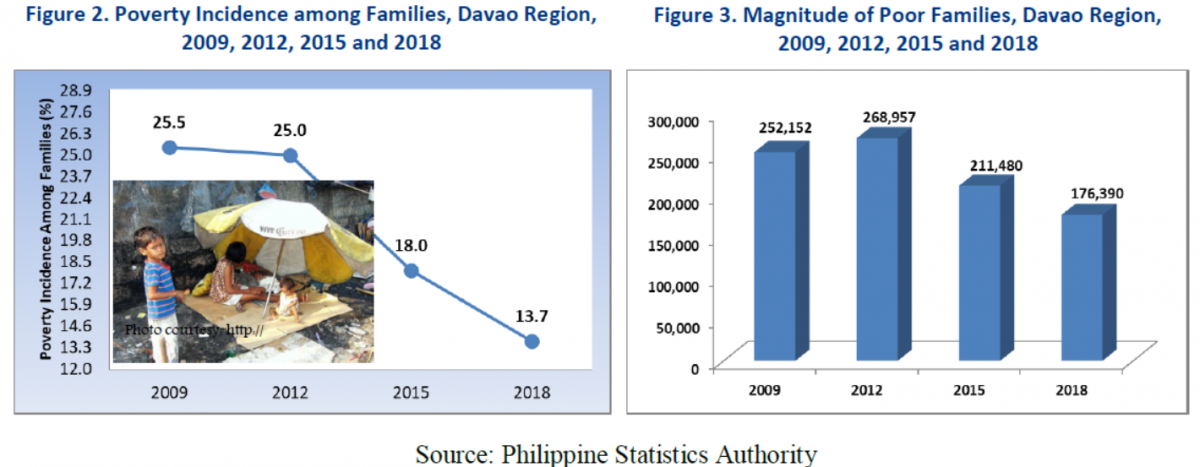
The poverty incidence of families in Davao Region was estimated at 13.7 percent, or roughly one out of five families was estimated to be poor in 2018. The estimate was lower than the 2015 and 2012 poverty incidence figures, which were estimated at 18.0 percent and 25.0 percent, respectively. Similarly, the estimated number of poor families has dropped down by 16.6 percent from 211,480 in 2015 to 176,390 in 2018.

Meanwhile, the proportion of Davaoeno families in extreme poverty whose incomes are not sufficient to meet basic food needs stood at 3.6 percent, which is 2.2 percentage points lower than the 5.8 percent estimate in 2015. Consequently, the estimated number of extremely subsistence poor families significantly dropped by 32.2 percent from 68,460 in 2015 to 46,420 in 2018.
19 out of 100 Davaoeños are poor
The latest poverty estimates also indicated that 19 out of 100 Davaoeños were not able to meet the basic food and non-food requirements in 2018. The figure was an 4.6 percentage points decline compared to the 2015 estimate of 23.5 percent. The magnitude of poor population likewise declined by 15.5 percent from 1.1 million in 2015 to 969 thousand in 2018.

On the other hand, in 2018 the subsistence incidence among individuals stood at 5.6 percent, a decline of 2.8 percentage points from the previous estimate of 8.4 percent. The magnitude of Davaoenos who were not able to meet basic food requirements also declined by 29.9 percent from 410,860 in 2015 to 287,820 in 2018.

Davao's poverty incidence is the lowest in Mindanao

Among the regions in Mindanao, Davao Region, remained with the lowest poverty incidences of both families and individuals with ARMM having the highest at 53.6 percent poverty incidence among families and 61.3 percent poverty incidence among population in 2018.
In terms of subsistence, 30 out of 100 Mindanaon were not able to meet the minimum required food needs in ARMM, the highest incidence estimated among the regions in Mindanao in 2018. In the same period, the highest subsistence incidence among families was also recorded in the same region at 22.8 percent while Region XI had the lowest subsistence incidences among families and individuals.
Between 2015 and 2018, all the regions in Mindanao experienced a reduction in the number of poor families and individuals, except ARMM. The magnitude of poor families in ARMM increased by 6.6 percent from 330.4 thousand in 2015 to 352.3 thousand in 2018 while the number of poor individuals increased by 10.7 percent from 2.2 million to 2.5 million.
Poverty in Davao Region provinces
In the clustering of provinces in Davao Region, based on poverty incidences among families between 2015 and 2018, Davao Occidental and Davao del Norte improved from cluster 1 to cluster 2 and from cluster 3 to cluster 4, respectively. Compostela Valley and Davao del Sur remained in cluster 3 and cluster 4, respectively, while Davao Oriental moved from cluster 3 to cluster 2.
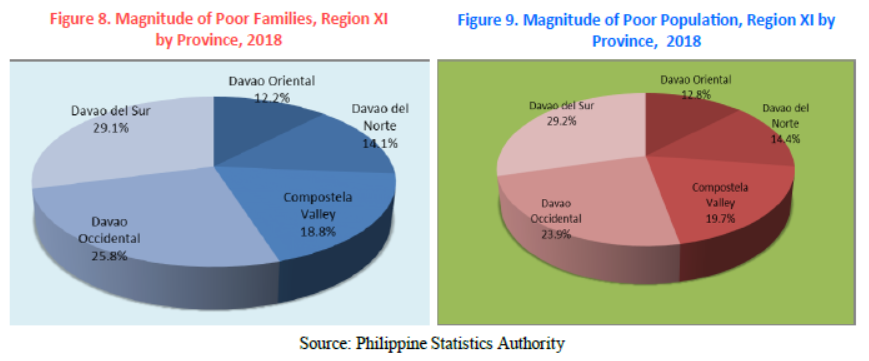
Of the 176,390 extremely poor families in Davao Region in 2018, 29.1 percent were families in Davao del Sur, 25.8 percent were in Davao Occidental, 18.8 percent were in Compostela Valley, 14.1 percent were in Davao del Norte and 12.2 percent were in Davao Oriental. Almost the same distributions were noted in terms of extremely poor individuals in 2018 in the provinces of Davao Region.
Income Gap, Poverty Gap and Severity of Poverty
In addition to the thresholds and incidences, the PSA also releases other poverty-related statistics such as income gap, poverty gap and severity of poverty. In 2018, on average, incomes of poor Davaoeño families were short by 21.2 percent of the poverty threshold. This means that on average, an additional monthly income of PhP2,289 is needed by a poor family with five members in order to move out of poverty in 2018.
Approved for Release:
PEPITO D. AMOYEN
OIC-Regional Director
More on Poverty Statistics...
 PhP 10,797 needed to stay out of poverty
PhP 10,797 needed to stay out of poverty







